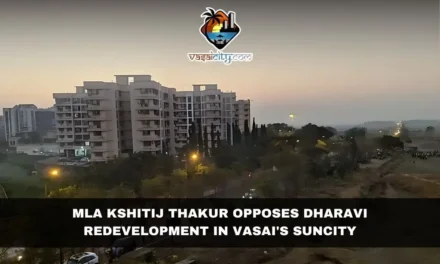Vasai, a bustling town in India, has recently been besieged by a string of audacious ATM heists, leaving local authorities and residents alarmed. In the latest incident, which occurred in the early hours of Saturday, an unidentified group of criminals successfully vandalized an ATM belonging to a non-banking company and made off with a staggering amount exceeding Rs 14 lakh. This brazen act marks the second such heist in the area within a span of 40 days, highlighting a growing concern for the security of financial institutions and the need for enhanced measures to combat organized crime.
The Crime Scene:
The Hitachi Money Spot ATM, situated in the Bhoidapara locality, bore the brunt of the criminal operation that unfolded at approximately 2 am. Investigators suspect that a gas-cutter was employed to forcefully gain access to the cash storage boxes within the machine. Preliminary investigations suggest the involvement of a minimum of three perpetrators, whose identities remain unknown.
Authorities have revealed that the ATM in question was unguarded at the time of the incident, making it an attractive target for criminal elements. Company officials from Hitachi, holding a license from the Reserve Bank of India for the deployment and operation of ATMs, reported the startling loss of Rs 14 lakh from the compromised machine. As the investigation intensifies, law enforcement agencies are meticulously analyzing closed-circuit television footage from the vicinity of the ATM to identify any potential leads.
Pattern of ATM Heists:
This recent ATM heist is not an isolated incident in Vasai, as an earlier robbery took place on June 4, involving the ransacking of another bank ATM located approximately 2 kilometers away from the Bhoidapara site. The previous crime saw four unidentified assailants absconding with a staggering sum of Rs 19 lakh. The recurrence of these brazen thefts within a relatively short timeframe has left the community deeply concerned about the safety and security of their financial assets.
Authorities are investigating potential links between the two incidents, examining common modus operandi and similarities in the execution of the crimes. The proximity of the targeted ATMs suggests a certain level of premeditation and familiarity with the area, hinting at the possibility of an organized criminal network operating within Vasai or its vicinity.
Public Safety Concerns:
These recurring ATM heists have prompted local residents to question the effectiveness of existing security measures and law enforcement’s ability to curb such criminal activities. The incidents have highlighted the vulnerability of unguarded ATMs during late-night hours, especially in areas with sparse foot traffic. Vasai, known for its vibrant daytime activities, transforms into an eerily deserted neighborhood after sunset, providing a perfect cover for criminals to operate covertly.
Community members are now demanding increased police patrolling and surveillance around financial institutions, particularly during vulnerable periods. There is a growing consensus that installing additional security features, such as alarm systems, reinforced cash storage compartments, and improved video surveillance, could act as deterrents to potential criminals.
Collaborative Efforts and Security Upgrades:
In response to these alarming developments, local authorities are working closely with financial institutions, including Hitachi, and the Reserve Bank of India to implement immediate security upgrades. These measures aim to fortify existing infrastructure and enhance the overall safety of ATMs across Vasai.
Additionally, law enforcement agencies are pooling their resources and expertise to crack down on the criminal elements responsible for these audacious heists. Investigators are analyzing available evidence, seeking patterns, and employing advanced forensic techniques to apprehend the culprits swiftly. Collaborative efforts between local police, intelligence agencies, and financial institutions are critical to dismantling any criminal networks operating within the region.
Conclusion:
The recent surge in ATM heists in Vasai has sent shockwaves through the community, emphasizing the need for proactive measures to safeguard financial institutions and their customers. While investigations are ongoing, it is imperative that authorities prioritize the deployment of additional security measures, both in terms of technology and human resources. By fortifying the existing security infrastructure, intensifying surveillance, and improving coordination among stakeholders, Vasai can strive to create a secure environment for its residents and prevent future occurrences of such audacious crimes.









